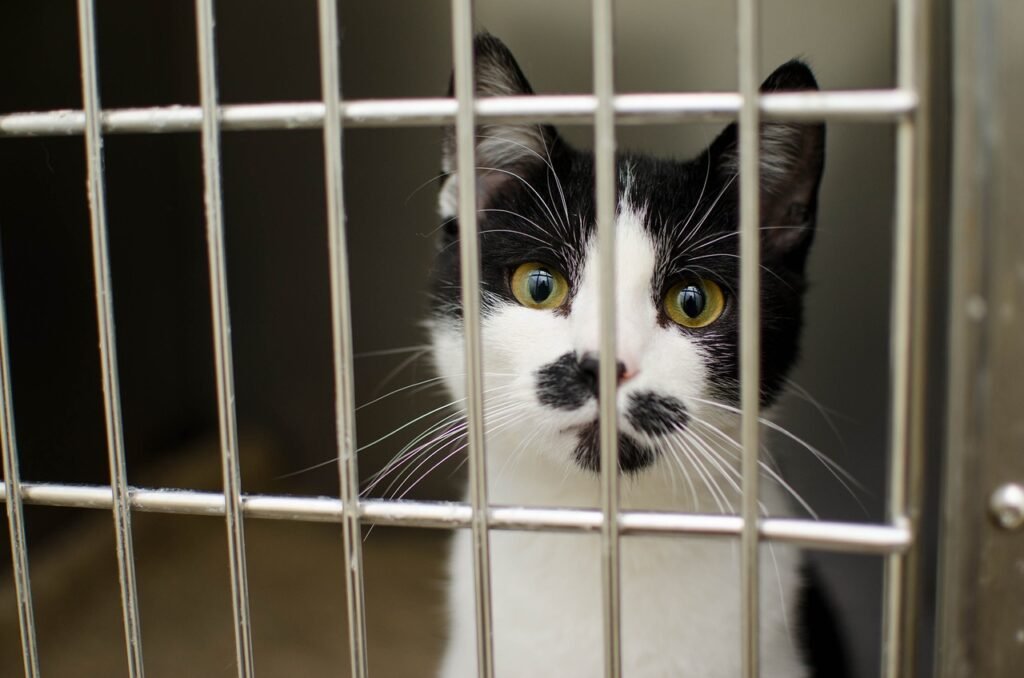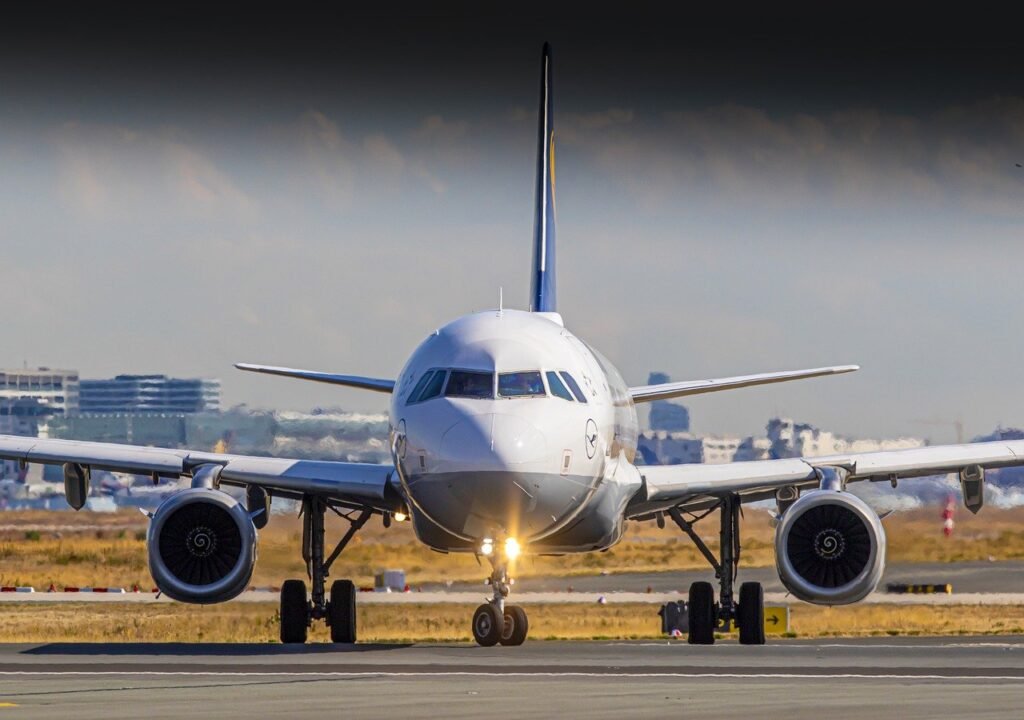
How to travel with a cat?
This is one of the key questions that every cat owner or to be cat owner grapples with.
Travel with a cat can be a stressful experience, but with the right tips, tricks, and essentials, it can be a smooth and enjoyable trip for both you and your furry feline. Discover the best way to travel with a cat in our comprehensive guide.
How to Travel with a Cat?
First of all, it’s important to start preparing your cat well in advance to ensure the best way to travel with a cat. This preparation can include getting the cat used to the carrier, taking short car rides to acclimate them to the motion, and making sure they are up to date on their vaccinations and micro chipped. Additionally, packing the essentials such as food, water, medications, a familiar blanket or toy, and a litter box is crucial for keeping your cat comfortable during the journey.
With the right preparation and care, traveling with your cat can be a positive and stress-free experience for both of you. Read on to find out how to have a fun adventure with your cat.
How to Travel with A Cat – The Preparation Stage

1. How to Travel with a Cat – Vet Visit
Ensuring that your pet is up to date on vaccinations can help protect them from potentially harmful diseases while you travel with a cat. A health certificate from your vet is often required for domestic and international travel, and it ensures that your pet is healthy enough to make the trip.
Additionally, your vet can provide any necessary medications to help keep your pet calm and comfortable during travel. Overall, a pre-trip vet check-up is crucial for ensuring the health and safety of your pet while on the road or in the air.
2. How to travel with a Cat – Choosing the Right Carrier
There are two main types of carriers for cats: hard-sided and soft-sided. Choosing the right carrier is crucial for the best way to travel with a cat. Hard-sided carriers are typically made of durable plastic and provide a sturdy and secure option for transporting your cat. Soft-sided carriers are made of fabric and are more lightweight and flexible, making them easier to carry and store.
To get your cat comfortable with the carrier, start by leaving it out in a familiar and cozy area of your home. Place treats, toys, and bedding inside to entice your cat to explore and become familiar with the carrier. You can also try feeding your cat inside the carrier to create positive associations. Carrier accessories such as bedding and toys can help make the carrier a more inviting and comfortable space for your cat.
3. How to Travel with a Cat – Packing The Essentials
How to travel with a cat successfully involves packing familiar items for your pets to reduce their stress. Some essential items to consider packing include food, water, bowls, a litter box, litter, a scoop, waste bags, toys, and grooming tools.
Having these familiar items on hand can help your pet feel more at ease in a new environment and reduce any anxiety they may experience while traveling. It’s also a good idea to bring along any medications or comfort items your pet may need to feel safe and secure during the journey.
How to Travel with a Cat by Car

Understanding how to travel with a cat in a car can be a challenging experience due to their sensitivity to new environments, potential motion sickness, and general stress associated with travel.
Here are detailed challenges and tips to manage them:
1. Stress and Anxiety
Challenge: Cats are creatures of habit and can become extremely stressed when taken out of their familiar environment. The sounds, smells, and movement of a car can be very frightening.
Management:
- Familiarization: Gradually acclimate your cat to the car by letting them explore it while it is stationary.
- Comfort Items: Bring along your cat’s favorite blanket, bed, or toy to provide a sense of familiarity and comfort.
- Pheromone Sprays: Use products like Feliway to spray the carrier and car interior to help reduce stress
2. Motion Sickness
Challenge: Like humans, cats can suffer from motion sickness, leading to vomiting, drooling, and general discomfort.
Management:
- Light Feeding: Feed your cat a small meal a few hours before traveling to minimize the risk of vomiting.
- Ginger Treats: Some cats may benefit from natural remedies like ginger, which can help settle their stomach.
- Veterinary Medication: Consult your vet about anti-nausea medication if your cat is particularly prone to motion sickness.
3. Safety Concerns
Challenge: Ensuring the safety of both the cat and the driver is paramount. A loose cat in a moving vehicle can be dangerous.
Management:
- Carrier: Always transport your cat in a sturdy, well-ventilated carrier that is securely fastened in the car.
- Carrier Familiarization: Make sure your cat is comfortable with the carrier well before the trip.
- Harness and Leash: If you need to take your cat out of the carrier, use a harness and leash to prevent them from escaping.
4. Frequent Stops
Challenge: Cats need breaks during long trips to stretch, use the litter box, and drink water.
Management:
- Planned Stops: Schedule regular stops every 2-3 hours to check on your cat and give them a chance to use a portable litter box.
- Portable Litter Box: Carry a small, portable litter box that can be easily set up during breaks.
- Water and Food: Bring your cat’s regular food and water, and offer small amounts during stops to keep them hydrated and comfortable.
5. Temperature Control
Challenge: Cats are sensitive to extreme temperatures, which can make travel uncomfortable or even dangerous.
Management:
- Climate Control: Ensure the car is properly air-conditioned or heated to keep the temperature comfortable for your cat.
- Never Leave Unattended: Never leave your cat alone in the car, especially in extreme temperatures, as this can quickly become life-threatening.
6. Noise Sensitivity
Challenge: The noise from the car engine, traffic, and unfamiliar sounds can be distressing to cats.
Management:
- Calm Environment: Keep the car environment as peaceful and quiet as possible. Play soft music or use white noise to mask unsettling sounds.
- Windows: Keep the windows up to minimize outside noise and avoid sudden loud noises.
7. Escape risk
Challenge: Cats are naturally curious and can try to escape when the car door or carrier door is opened.
Management:
- Secure Carrier: Ensure the carrier is always securely closed and fastened in the car.
- Harness and Leash: Use a harness and leash when opening the carrier to prevent escape.
- Careful Handling: Be vigilant and cautious when handling your cat during stops.
8. Health Issues
Challenge: Travel can exacerbate existing health conditions or cause new ones, like dehydration or urinary issues.
Management:
- Vet Check: Visit the vet before your trip to ensure your cat is healthy and fit to travel.
- Hydration: Make sure your cat drinks water regularly and monitor them for signs of dehydration.
- Medications: Bring any necessary medications and have a first-aid kit handy.
9. Behavioral Issues
Challenge: Cats may exhibit behavioral issues such as excessive meowing, scratching, or aggression due to stress.
Management:
- Behavioral Aids: Use calming aids such as pheromone sprays, calming collars, or natural supplements.
- Comforting Presence: Stay calm and reassuring. Your calm demeanor can help soothe your cat.
- Distractions: Provide toys or treats to distract and comfort your cat during the journey.
10. Planning and Logistics
Challenge: Ensuring all logistics are in place for a smooth journey can be demanding.
Management:
- Route Planning: Plan your route and stops in advance to ensure there are safe, pet-friendly places to stop.
- Emergency Plan: Have a plan in place for emergencies, including the locations of nearby veterinary clinics along your route.
- Supplies: Pack all necessary supplies, including food, water, litter, and cleaning materials.
How to Travel with a Cat by Plane

Understanding How to travel with a cat on a plane requires careful planning and preparation to ensure the safety, comfort, and well-being of your feline companion. Understanding the best way to travel with a cat by plane can make the journey smoother for both of you.
Here are the challenges you may face and tips on how to manage them effectively:
1. Airline Policies and Regulations
Challenge: Different airlines have varying policies regarding pet travel, including carrier specifications, fees, and health documentation requirements.
Management:
- Research: Check the airline’s pet travel policy well in advance of your trip.
- Reservations: Book your pet’s spot early, as airlines often have a limit on the number of pets allowed per flight.
- Documentation: Ensure you have all required health certificates, vaccination records, and other necessary documents.
2. Carrier Requirements
Challenge: Ensuring your cat’s carrier meets the airline’s size and safety specifications can be challenging.
Management:
- Approved Carrier: Purchase an airline-approved carrier that is comfortable and safe for your cat. It should be well-ventilated, leak-proof, and fit under the seat in front of you.
- Familiarization: Allow your cat to get used to the carrier by placing it in your home and encouraging your cat to explore it.
3. Health and Safety Concerns
Challenge: The stress of travel can impact your cat’s health, and certain health conditions may be exacerbated during flight.
Management:
- Vet Visit: Schedule a veterinary check-up before the trip to ensure your cat is healthy and fit to travel. Obtain a health certificate if required by the airline.
- Medications: Discuss the use of any necessary medications, such as sedatives or anti-anxiety drugs, with your vet.
4. Acclimatization to Travel
Challenge: Cats can become anxious and stressed in new environments, especially during air travel.
Management:
- Desensitization: Gradually acclimate your cat to the carrier and car rides to reduce travel anxiety.
- Calming Products: Use calming sprays, pheromone diffusers, or natural supplements to help reduce stress.
5. In-cabin vs. Cargo Hold
Challenge: Deciding whether to transport your cat in the cabin or the cargo hold can be difficult, especially for larger cats or longer flights.
Management:
- In-Cabin Preference: Whenever possible, opt to keep your cat with you in the cabin. This option is generally safer and less stressful.
- Cargo Hold Precautions: If your cat must travel in the cargo hold, ensure the carrier is sturdy, well-ventilated, and clearly labeled with your contact information.
6. Feeding and Hydration
Challenge: Keeping your cat properly fed and hydrated during the trip without causing discomfort or the need for frequent bathroom breaks.
Management:
- Light Meal: Feed your cat a light meal a few hours before the flight. Avoid feeding immediately before departure to prevent motion sickness.
- Water Access: Provide water in a spill-proof container and offer it periodically during the flight.
7. Bathroom Needs
Challenge: Managing your cat’s bathroom needs during a long flight can be tricky.
Management:
- Litter Box: Use a disposable litter box or pee pads within the carrier for longer flights.
- Pre-Flight Preparation: Encourage your cat to use the litter box before leaving for the airport.
8. Security Screening
Challenge: Navigating security screening with your cat can be stressful and time-consuming.
Management:
- Preparation: Arrive at the airport early to allow extra time for security checks.
- Carrier Removal: Be prepared to take your cat out of the carrier for X-ray screening. Use a harness and leash to prevent escapes.
9. Flight Environment
Challenge: The noise, pressure changes, and confined space in the cabin can be unsettling for cats.
Management:
- Comfort: Line the carrier with a familiar blanket or item that smells like home.
- Temperature Control: Ensure the carrier is placed in a temperature-controlled area and avoid exposing your cat to drafts.
10. Post-Flight Care
Challenge: Adjusting to a new environment after the flight can be stressful for your cat.
Management:
- Quiet Space: Provide a peaceful, safe space for your cat to decompress after the flight.
- Routine: Try to maintain your cat’s regular feeding and bathroom routine as closely as possible.
- Monitoring: Monitor your cat for any signs of stress or illness and contact a vet if necessary.
How to Travel with a Cat – Staying at Your Destination

1. Accommodations
When looking for pet-friendly hotels or rental properties, it’s important to do your research and find a place that not only allows pets but also accommodates them safely and comfortably. This ensures you have the best way to travel with a cat at your destination.
Once you’ve found a pet-friendly place to stay, it’s important to prepare the room to be cat-friendly. Such preparation may involve hiding hazards such as electrical cords or small objects that a curious cat could ingest. It’s also helpful to set up a designated area for your cat with their bed, toys, and litter box to help them feel more at home. Taking these steps can help ensure a smooth and enjoyable stay for both you and your feline friend.
2. Settling In
It’s important to allow your cat to explore and get comfortable in their environment. Settling in helps them feel secure and reduces anxiety. Additionally, maintaining a routine can also help keep your cat relaxed, as they thrive on predictability and structure. Providing a consistent feeding schedule, playtime, and quiet time can all contribute to a sense of stability for your cat.
How to Travel with a Cat – Handling Emergencies

1. Identifying Local Vet Clinics
When researching nearby vet clinics and emergency animal hospitals, it’s important to note down their contact information, hours of operation, and the services they offer. It’s also a good idea to inquire about their emergency protocols and any after-hours services they may provide. Keep this information easily accessible in case of an emergency with your pet.
2. Pet Insurance
When considering travel insurance for pets, it’s important to understand the coverage for emergencies during travel. This type of insurance can provide financial protection in case your pet experiences a medical emergency while away from home. It typically covers expenses such as veterinary care, medication, and even transportation costs if your pet needs to be flown back home for treatment.
It’s important to carefully review the policy details and understand what is and isn’t covered, as well as any limitations or exclusions. Additionally, be sure to consider the specific needs of your pet and the potential risks associated with your travel plans.
Conclusion
When you learn how to travel with a cat, it’s important to plan and prepare ahead of time to ensure a smooth and enjoyable trip. Embrace the adventure and cherish the memories you create together with these expert tips on the best way to travel with a cat.
